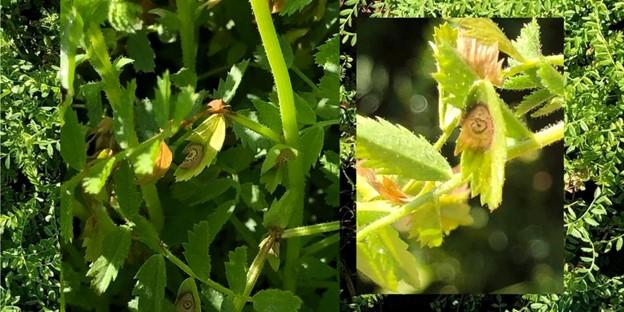
Credit: Lars Kamphuis
A staple for many, chickpeas are a rich source of vitamins, minerals, and fiber and offer many health benefits, such as improving digestion and reducing the risk of ailments including heart disease and cancer. However, chickpeas possess a rather narrow genetic diversity and are susceptible to Ascochyta blight, a devastating disease that can cause a yield loss of up to 100 percent. In Australia alone, this disease costs an average of $4.8 million annually.
To help curtail the impact of Ascochyta blight, plant pathologists in Western Australia have turned to wild relatives of the chickpea: Cicer reticulatum and Cicer echinospermum and found that these plants have a natural resistance to the disease. This is the first report of Ascochyta blight resistance in a novel wild Cicer collection.
“Identifying such sources of resistance is a very exciting finding for the chickpea industry and can offer growers better genetic control of the disease,” explained Lars Kamphuis, one of the scientists involved with the study. “These sources of resistance can be utilized in chickpea breeding programs around the world to improve their resistance to this pathogen.”
Kamphuis and his colleagues used a germplasm collection that has also been a valuable source of resistance to other diseases and pests such as root lesion nematodes and pod-borer. Using the disease scores for Ascochyta blight and genotypic information of the germplasm, they were also able to identify Ascochyta blight-associated regions in the wild Cicer genome.
“Collaborators in Australia are evaluating this resource for sources of resistance to Phytophthora root rot, acid soil, and chilling tolerance,” said Kamphuis. “This novel wild Cicer germplasm is thus being mined for novel sources of biotic and abiotic stress resistance and will help improve the genetic diversity within chickpea breeding programs.”
###
For more information about this study read “Identification of Novel Sources of Resistance to Ascochyta Blight in a Collection of Wild Cicer Accessions” published in the February issue of Phytopathology. To hear more about how Australian researcher are utilizing the wild Cicer resource to improve chickpeas listen to the podcast in the following link (https:/
Media Contact
Ashley Carlin
[email protected]
Related Journal Article
http://dx.




